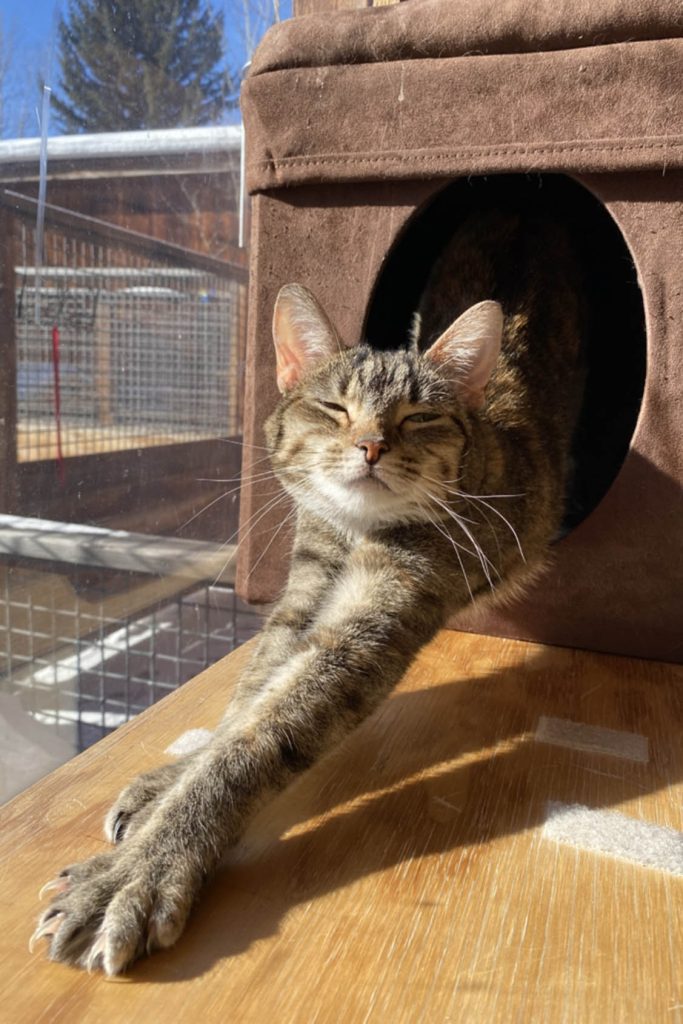Bringing a new cat into your home is an exciting and rewarding experience, but it can also be challenging. Cats are territorial creatures, and the introduction of a new feline into your household needs to be handled with care to ensure a smooth transition for everyone involved.
Preparing for the New Arrival
Before bringing your new cat home, it is essential to make some preparations to ensure a smooth transition. Here are the key steps to follow:
1. Set Up a Safe Space
Create a dedicated safe space for your new cat. This should be a quiet, enclosed area where your new cat can feel secure and adjust to their new environment without feeling overwhelmed. Equip the space with the essentials:
- A cozy bed
- Food and water bowls
- A litter box
- Scratching posts
- Toys
2. Gather Supplies
Ensure you have all the necessary supplies ready before the new cat arrives. This includes:
- Food and water bowls
- Litter box and litter
- Cat food
- Scratching posts or pads
- Toys and interactive items
- A comfortable bed or blanket
- A carrier for transportation

3. Schedule a Vet Visit
A vet visit should be scheduled soon after the new cat arrives to ensure they are healthy and up-to-date on vaccinations. This also provides an opportunity to discuss any specific health concerns or questions you may have.
4. Cat-Proof Your Home
Ensure your home is safe for the new cat by removing potential hazards. This includes securing loose wires, removing toxic plants, and ensuring that windows and balconies are secure.
Introducing the New Cat to Your Home
The actual introduction process should be gradual and carefully managed to minimize stress for both the new cat and any existing pets. Here’s how to go about it:
1. The Initial Introduction
a. Keep Them Separated
Initially, keep the new cat and existing pets separated. Allow the new cat to explore their designated safe space while the existing pets continue with their routine. This helps reduce stress and allows the new cat to adjust to their surroundings at their own pace.
b. Use Scent Swapping
Cats rely heavily on their sense of smell to understand their environment. Use scent swapping to help them get used to each other’s presence:
- Swap bedding between the new cat and existing pets.
- Rub a cloth on one cat and place it near the other’s space.
- Let them sniff each other’s toys and scratching posts.
2. Controlled Visual Introductions
a. Use Barriers
After a few days, allow the cats to see each other through a barrier, such as a baby gate or a cracked door. This helps them get accustomed to each other’s presence without direct contact.
b. Positive Reinforcement
During these visual introductions, use positive reinforcement to create a positive association. Offer treats and praise to both cats to reward calm behavior.
3. Supervised Meetings
Once the cats appear comfortable seeing each other through a barrier, it’s time for supervised meetings. These meetings should be short and positive:
- Start with Short Sessions: Begin with short, supervised interactions and gradually increase the duration.
- Stay Calm: Remain calm and avoid any sudden movements or loud noises.
- Watch for Stress Signals: Monitor both cats for signs of stress, such as hissing, growling, or flattened ears. If either cat shows signs of distress, separate them and try again later.
4. Gradual Integration
As the cats become more comfortable with each other, you can start to integrate them more fully into the household:
- Increase Interaction Time: Gradually increase the time the cats spend together.
- Allow Exploration: Allow the new cat to explore the rest of the house while the existing pets are confined to another area.
- Monitor Interactions: Continue to supervise interactions until you are confident that the cats can coexist peacefully.
Building Positive Relationships
Creating a harmonious multi-cat household takes time and patience. Here are some additional tips to help build positive relationships:
1. Provide Ample Resources
Ensure there are enough resources to go around, so cats don’t feel the need to compete. This includes:
- Multiple litter boxes (one per cat plus an extra)
- Multiple feeding stations
- Several scratching posts and climbing structures
- Plenty of toys and interactive items
2. Respect Their Space
Give each cat their own space to retreat to when they need alone time. This can be a separate room, a high perch, or a cozy hideaway.
3. Encourage Play
Interactive play is a great way to build positive relationships between cats. Use toys that both cats can enjoy, such as wand toys or laser pointers, to encourage cooperative play.
4. Maintain Routine
Cats thrive on routine, so try to keep feeding times, play sessions, and other activities consistent. This helps reduce stress and creates a sense of stability.
5. Be Patient
Building a harmonious multi-cat household takes time. Be patient and give each cat the time they need to adjust. Don’t rush the process or force interactions.

Addressing Common Issues
Introducing a new cat doesn’t always go smoothly. Here are some common issues you might encounter and how to address them:
1. Aggression
a. Identify Triggers
Determine what is triggering the aggression. It could be territorial behavior, fear, or competition for resources.
b. Separate and Reintroduce
If aggression occurs, separate the cats and reintroduce them gradually, using the steps outlined earlier.
c. Consult a Professional
If aggression persists, consider consulting a veterinarian or a professional animal behaviorist for guidance.
2. Resource Guarding
a. Provide Separate Resources
Ensure each cat has their own food and water bowls, litter boxes, and sleeping areas to reduce competition.
b. Monitor Mealtimes
Supervise mealtimes to prevent one cat from guarding food. You may need to feed them in separate rooms initially.
3. Stress and Anxiety
a. Use Calming Aids
Consider using calming aids such as pheromone diffusers, which can help reduce stress and anxiety.
b. Create a Calm Environment
Maintain a calm and quiet environment, especially during the initial introduction phase.
4. Litter Box Issues
a. Ensure Cleanliness
Keep all litter boxes clean to encourage their use.
b. Address Territorial Marking
If one cat is marking territory, ensure there are enough litter boxes and that they are placed in quiet, accessible areas.
Introducing a new cat to your home requires careful planning, patience, and understanding of feline behavior. By following the steps outlined in this guide, you can create a harmonious environment where all your cats can thrive.
Remember that every cat is unique, and the key to a successful introduction lies in observing their behavior, respecting their needs, and being patient throughout the process.
A smooth transition will not only make your new cat feel welcome but will also help build a loving and peaceful multi-cat household.
